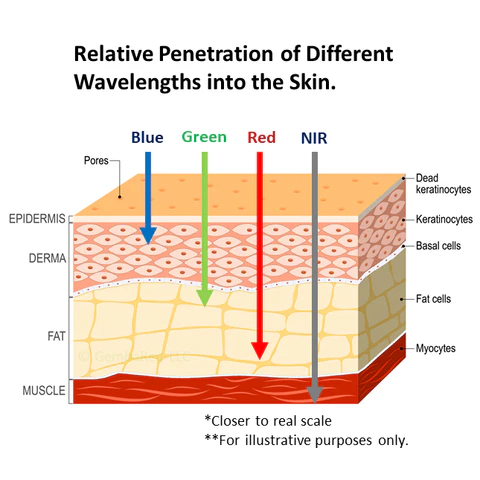Protocol for improved facial collagen synthesis
-
My acne has cleared up a ton through peaty dietary tweaks but I still haven't nailed down that youthful,thick skin collagenous look.
I still feel like my face is relatively dry and rough.
What foods/supplements would you consume to reach peak collagen ?
On my list i have:Beef gelatin(30-50grams),Vitamin C,Zinc,Pansterone,Redlight sessions
-
@Cezar red light but also infrared light - Infrared light / infrared radiation are wave lengths of light that aren’t visible to the eye. They are heavily emitted by heat lamps / chicken lamps.
Infrared light has similar benefits to red light, including infrared including stimulating collagen synthesis , and it has the benefit of being less invasive than red light + a lot cheaper.
Effects of Infrared Radiation on Skin Photo-Aging and Pigmentation
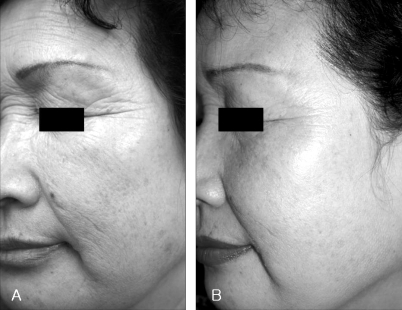
I have two 150W heat lamps directed towards my face on either sides of my desk, and I just work infront of them. Despite the high wattage, most of the light produced is invisible/infrared and it’s like having normal two desk lights pointed at my face, it’s not very bright at all . It allows me to get at least an hour of direct facial exposure to ALOT of infrared radiation + a bit of red light. I also put one on the side of the bed and nap whilst laying on the side of my body, with my face facing the infrared light as I sleep. It’s maybe 10cm away from my face.
I’ve noticed a big reduction in eye bags, despite sleeping less due to being so busy. I haven’t kept an eye on facial collagen but I think it would really help based off of my experience
-
I agree with @alfredoolivas about of value of near infrared (NIR) light. It penetrates deeper into the skin than red light.
Near infrared (NIR) has the deepest penetration into the body.
The general rule is that the longer the wavelength the deeper the light penetrates into the skin. However, when the light wavelength lengthens to the infrared (IR) region, the penetration depth of the light decreases because water in the tissue absorbs IR light.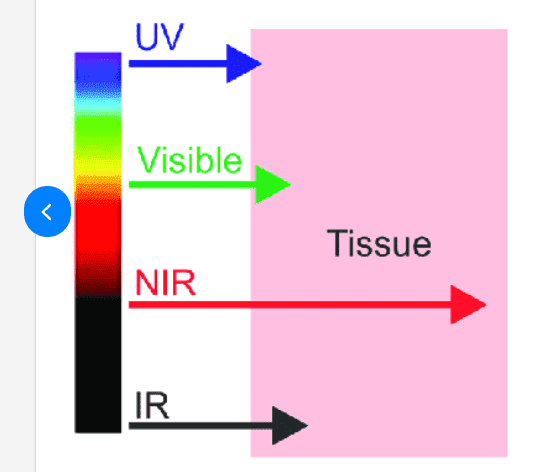
-
@DavidPS said in Protocol for improved facial collagen synthesis:
The general rule is that the longer the wavelength the deeper the light penetrates into the skin. However, when the light wavelength lengthens to the infrared (IR) region, the penetration depth of the light decreases because water in the tissue absorbs IR light.
This is true but doesn’t take account wavelengths affinity for cytochrome C oxidise. Wavelengths around the 660nm value (red light) have the greatest affinity for cytochrome C oxidase acoding to Peat. I think their affinity for cytochrome C oxidase makes up for their lack of pentetration.
All wavelengths of light even FAR infrared light probably are absorbed by cytochrome C oxidase despite some far wavelengths being heavily absorbed by water.
For example, a study showed that a single laser of far infrared radiation applied to the base of the foot (which is largely dead skins ?) for a short period of time was able to substantially decrease blood sugar and cortisol. That can’t happen if it isn’t absorbed by cytochrome c oxidase.
-
@Cezar said in Protocol for improved facial collagen synthesis:
My acne has cleared up a ton through peaty dietary tweaks but I still haven't nailed down that youthful,thick skin collagenous look.
I still feel like my face is relatively dry and rough.
What foods/supplements would you consume to reach peak collagen ?
Anything that improves thyroid and parathyroid function, the main glands involved in the health of skin and all other connective tissues, should, in theory, improve skin hydration. Dry skin is a common symptom of hypothyroidism. I find sugar from milk and fruit, particularly melon and ripe bananas, to be the most effective foods for softening skin. On a diet abundant in fruit and raw milk, my skin is buttery soft, even typically rougher areas of the body like the elbows and feet, and even during the winter.
-
@alfredoolivas - thanks
-
Oral hyaluronic acid has been shown to increase epidermis thickness. You may be getting enough from your diet. It is a component of Beef gelatin.
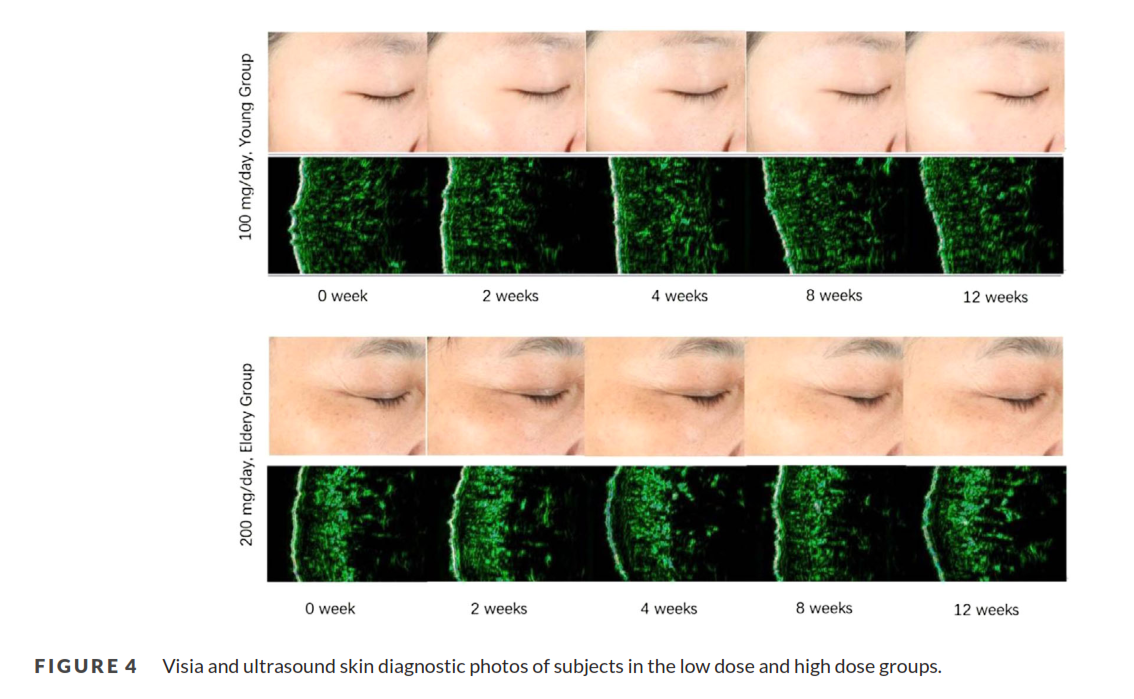
-
-
@DavidPS Hyaluronic acid is made endogenously as well. The precursors, UDP-glucuronic acid and UDP-N-acetylglucosamine are made during glycolysis.
So keeping the metabolic rate high should help provide hyaluronic acid too
-
@alfredoolivas - Thanks, you keep me thinking and that is a good thing.
The amount of hyaluronic acid in the body is known to decline with age.
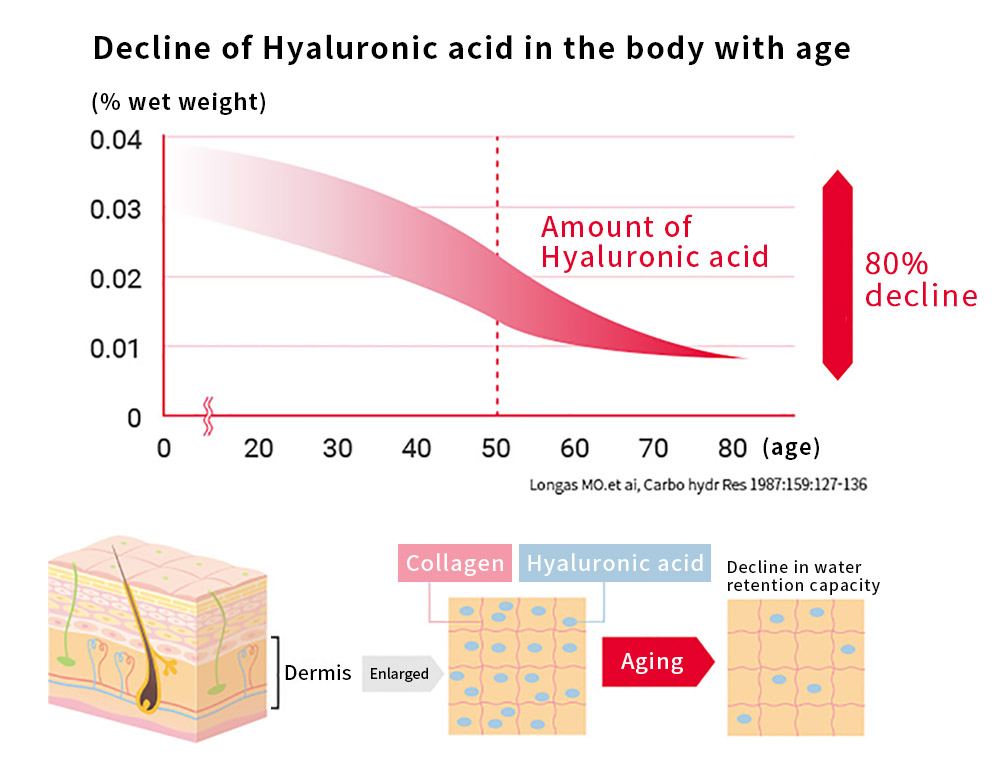
Oral supplementation with hyaluronic acid has been shown to restore a more youthful skin texture.
-
@Cezar IPA beer and chocolate
-
Bump bump
-
Bump bbbb
-
@alfredoolivas said in Protocol for improved facial collagen synthesis:
@DavidPS Hyaluronic acid is made endogenously as well. The precursors, UDP-glucuronic acid and UDP-N-acetylglucosamine are made during glycolysis.
So keeping the metabolic rate high should help provide hyaluronic acid too
Does this imply counter-productive effects of topical vitamins in skin care if they were meant and suitable for increasing skin OXPHOS, since we need that glycolyis for precursors of hyaluronic acid? And the lactate from glycolysis for stem cell maintenance.
More topical sugar/dextrose peelings for everyone before going to bed to feed glycolysis in skin? -
@CrumblingCookie I don't know, but DHEA which directly inhibits glucose-6-phosphate dehydrogenase and hence lowers the precursors for hyaluronic acid, has shown to have rejuvinating effects on skin, and you need cofactors to produce hyaluronic acid, it's not all about availability of precursors.
-
estrogen increased HA : )
-
@alfredoolivas
Thanks. I'll will want to try out a topical +- 2-5% (D) lactic acid solution oversaturated with glucose for my skin as a kind of very soft peeling.
Need to find ways to put to good use those bagloads of dextrose powder which I have left over.And remember to take up eating yellow peppers regularly again
for their HAfor some regular, natural vit C content as per DavidPS's linked list. I don't have access to fancy guavas and papayas so yellow peppers are the most practical everyday source. -
@CrumblingCookie dude did you even read that page? none of those foods contain HA. it's just a list of foods with vitamin C.
-
@Cezar OP OP is a giga chad btw
-
@eduardo-crispino said in Protocol for improved facial collagen synthesis:
@CrumblingCookie dude did you even read that page? none of those foods contain HA. it's just a list of foods with vitamin C.
Ah what a load of clickbaiting crapcontenting. Thanks for the hint. Of course I hadn't read it.
